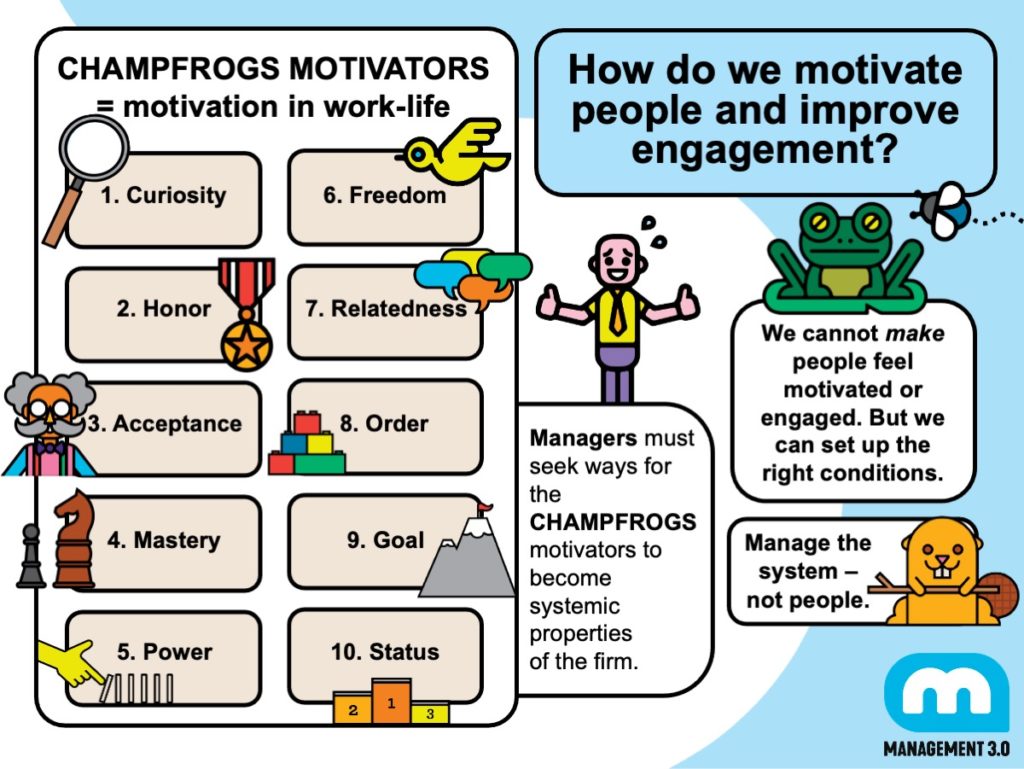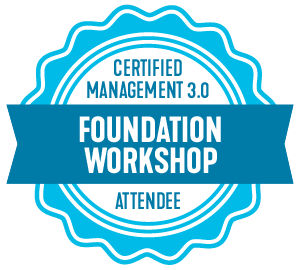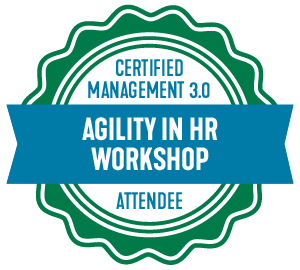In this module you will learn why employee motivation is important. You will learn how to motivate employees and how you as a leader can increase employee engagement. Questions such as what are the key drivers of engagement and how to keep your employees engaged and involved will be answered through theory and activities such us playing Moving Motivators.
What will you learn?
- How does engagement relate to motivation? What happens if people are engaged but not motivated and vice versa.
- The difference between intrinsic and extrinsic motivation and which one is more important in a Management 3.0 context.
- Why is it important to motivate people, what is the need for motivation?
- The ten motivators of the CHAMPFROGS model: Curiosity, Honor, Acceptance, Mastery, Power, Freedom, Relatedness, Order, Goal and Status.
- How to use the Moving Motivator Cards to learn about individual motivators of people (Get them here)?
- The weakness of a generic employee engagement program in an organization.
You can’t motivate people, but can create a system where people can be motivated.
What will we discuss in this module?
- When did you enjoy your work for the last time and more importantly why?
- Which companies have their motivators built into their system? What about your organization?
- Is employee engagement about intrinsic or extrinsic motivation? If both, how do you find the right balance?




